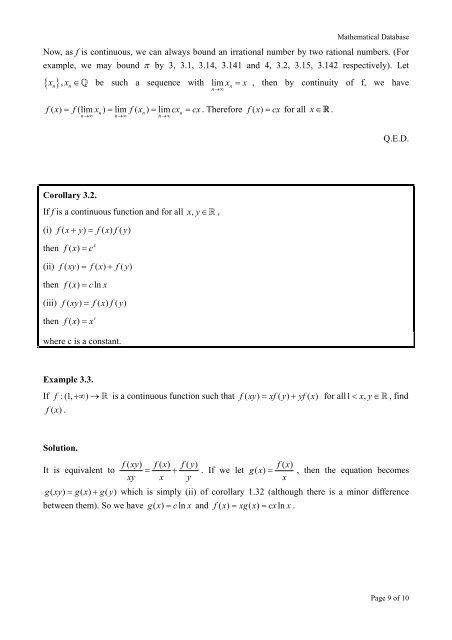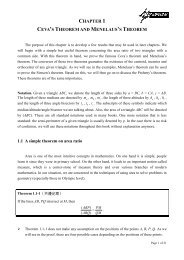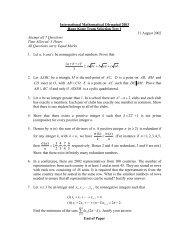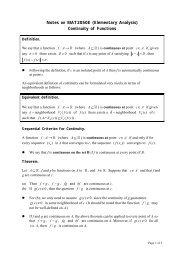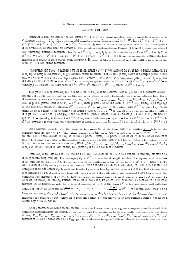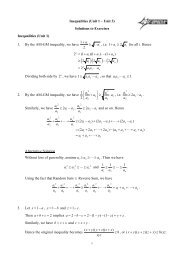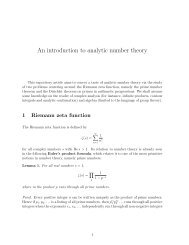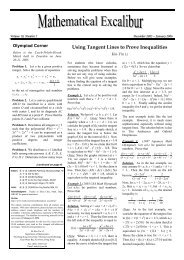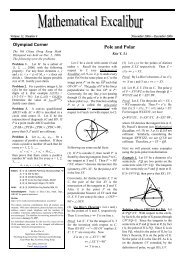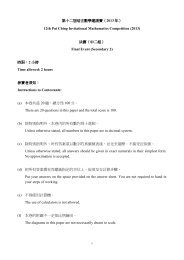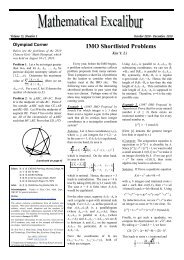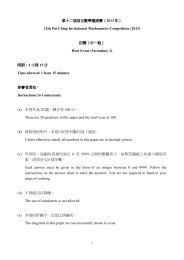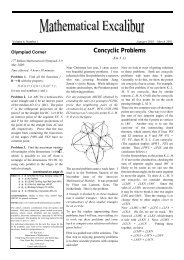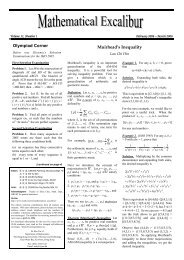1. Functional equations in one variable
1. Functional equations in one variable
1. Functional equations in one variable
You also want an ePaper? Increase the reach of your titles
YUMPU automatically turns print PDFs into web optimized ePapers that Google loves.
Mathematical Database<br />
Now, as f is cont<strong>in</strong>uous, we can always bound an irrational number by two rational numbers. (For<br />
example, we may bound π by 3, 3.1, 3.14, 3.141 and 4, 3.2, 3.15, 3.142 respectively). Let<br />
{ xn},<br />
xn∈ be such a sequence with lim x n<br />
= x , then by cont<strong>in</strong>uity of f, we have<br />
n→∞<br />
f ( x) = f(lim x ) = lim f( x ) = lim cx = cx. Therefore f ( x)<br />
n n n<br />
n→∞ n→∞ n→∞<br />
= cx for all x∈R .<br />
Q.E.D.<br />
Corollary 3.2.<br />
If f is a cont<strong>in</strong>uous function and for all xy∈ , ,<br />
(i) f ( x+ y) = f( x) f( y)<br />
then f ( x)<br />
= c<br />
(ii) f ( xy) = f ( x) + f ( y)<br />
then f ( x) = clnx<br />
(iii) f ( xy) = f ( x) f ( y)<br />
then f ( x)<br />
= x<br />
where c is a constant.<br />
x<br />
c<br />
Example 3.3.<br />
If<br />
f :(1, +∞)<br />
→ is a cont<strong>in</strong>uous function such that f ( xy) = xf ( y) + yf ( x)<br />
for all1 < xy , ∈ , f<strong>in</strong>d<br />
f ( x ).<br />
Solution.<br />
It is equivalent to f ( xy) = f ( x) + f ( y)<br />
. If we let<br />
xy x y<br />
gxy ( ) = gx ( ) + gy ( )<br />
f ( x)<br />
gx ( ) = , then the equation becomes<br />
x<br />
which is simply (ii) of corollary <strong>1.</strong>32 (although there is a m<strong>in</strong>or difference<br />
between them). So we have g( x) = clnxand<br />
f ( x) = xg( x) = cxlnx.<br />
Page 9 of 10


